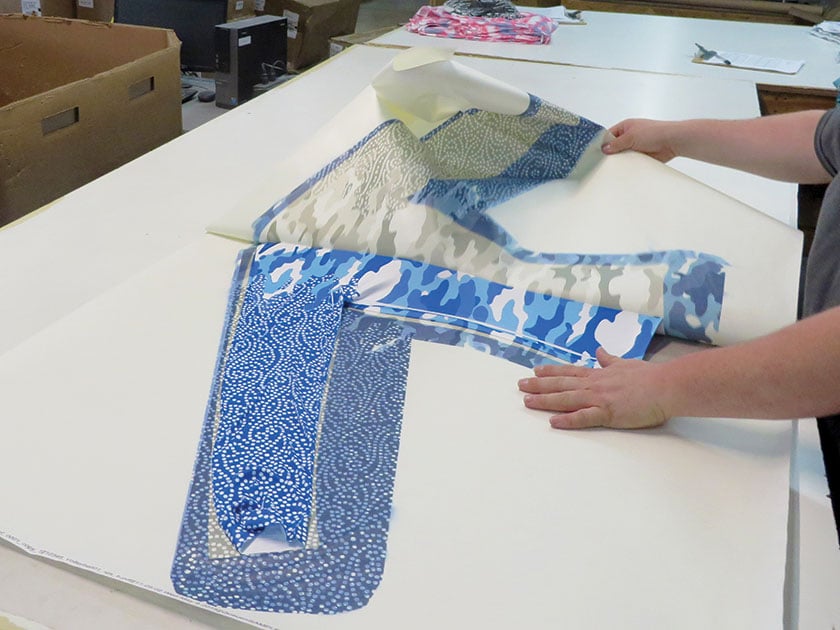Dye sublimation printing technology for polyester textiles
Evolving technology means that there is now a number of printing techniques available to the textile industry. Therefore we thought it would be appropriate to blog about what these techniques are, what advantages they have, and also what restrictions can apply.

Sublimation printing, also known as heat transfer paper print, is one of the most popular processes in the industry due to the following advantages.
* No minimums (depending on producer)
* Ease in creating panel prints due to small heat press machines
* Highly detailed prints can be achieved
Unlike screen printing, the detail which can be achieved in sublimation printing artwork is unlimited.
Basically, the artwork is printed onto paper first, then transferred onto fabric using a heat process. In more technical terms, a sublimation printer is a computer printer which employs a printing process that uses heat to transfer dye onto medium materials such as a plastic card, paper, or fabric. The sublimation name is applied because the dye transitions between the solid and gas states without going through a liquid stage.

You can only sublimate on Polyester fabrics: This is due to the temperatures needed to achieve a high-quality print and depth of color.
Recommended printing temperatures and times are:
* 220-230 degrees
* No longer than 40 seconds
Sublimation printing does not use a traditional wet process. As the sublimation transfer paper is placed on top of the fabric for the dyes to be transferred, the dye remains on the surface and does not penetrate entirely through the fabric. The fabric's knit construction affects the result, especially for circular knit fabrics, unless they have a fine gauge knit and are made specifically for sublimation printing.
More info:
Website: www.skyimagepaper.com
Company Name: Fei Yue Digital Technology Co., LTD
E-mail: sales@feiyuepaper.com
Tel: 86-025-86628894
Whatsapp: +86 18252072197
Address: Central Road 323, Nanjing, Jiangsu, China

Sublimation printing, also known as heat transfer paper print, is one of the most popular processes in the industry due to the following advantages.
* No minimums (depending on producer)
* Ease in creating panel prints due to small heat press machines
* Highly detailed prints can be achieved
Unlike screen printing, the detail which can be achieved in sublimation printing artwork is unlimited.
Basically, the artwork is printed onto paper first, then transferred onto fabric using a heat process. In more technical terms, a sublimation printer is a computer printer which employs a printing process that uses heat to transfer dye onto medium materials such as a plastic card, paper, or fabric. The sublimation name is applied because the dye transitions between the solid and gas states without going through a liquid stage.

You can only sublimate on Polyester fabrics: This is due to the temperatures needed to achieve a high-quality print and depth of color.
Recommended printing temperatures and times are:
* 220-230 degrees
* No longer than 40 seconds
Sublimation printing does not use a traditional wet process. As the sublimation transfer paper is placed on top of the fabric for the dyes to be transferred, the dye remains on the surface and does not penetrate entirely through the fabric. The fabric's knit construction affects the result, especially for circular knit fabrics, unless they have a fine gauge knit and are made specifically for sublimation printing.
More info:
Website: www.skyimagepaper.com
Company Name: Fei Yue Digital Technology Co., LTD
E-mail: sales@feiyuepaper.com
Tel: 86-025-86628894
Whatsapp: +86 18252072197
Address: Central Road 323, Nanjing, Jiangsu, China


评论
发表评论